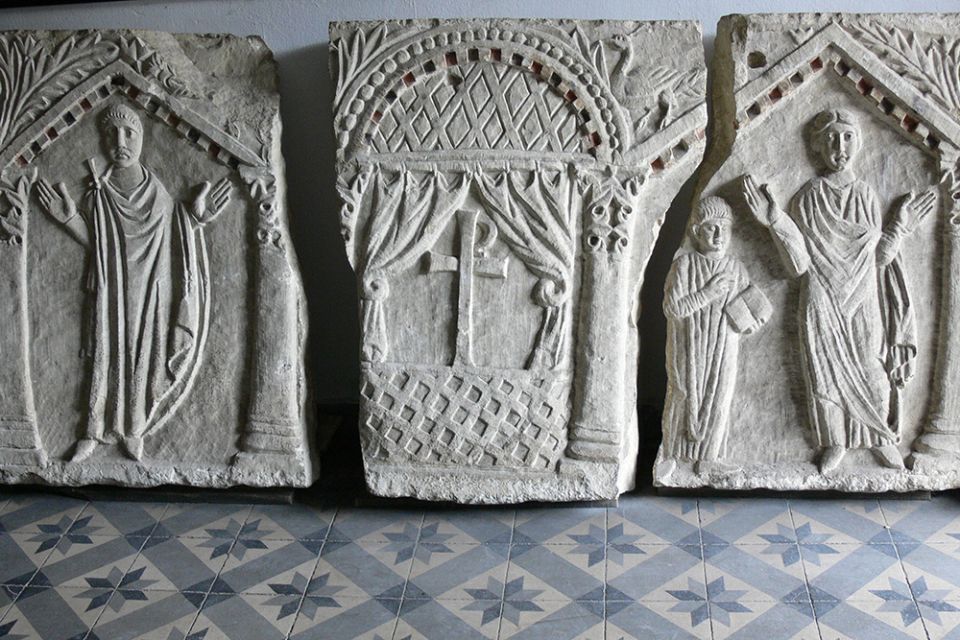Ultimate Retcon
Remember the very first episode of Friends? It’s the origin story of Rachel, who storms out of her near-miss wedding and into a random Manhattan coffeeshop where Monica, Phoebe, Ross, Joey, and Chandler welcome this stranger who’s having second thoughts about getting married. It’s the beginning of a beautiful friendship that goes on for ten seasons.

But a few seasons in, that origin story changes: The runaway bride? Pretend she never existed. Instead, later episodes reveal that the gang had been pals back in high school. For the writers of Friends, the back story of a long-term friendship makes for a better storyline than a spur-of-the-moment acquaintance with a distraught young woman in a wedding dress.
It’s a literary technique known as retconning: Retroactive continuity. It happens when writers reframe the past to meet current plot needs. Sherlock Holmes, for example, killed off in “The Final Problem,” is resurrected when indignant fans demand more stories about the brilliant detective. Princess Leia is revealed as Luke Skywalker’s long-lost twin sister in Return of the Jedi, opening the door to a romance with Han Solo and ruling out a love triangle with Luke. Superman, a gritty, streetwise crimefighter, is morphed into a clean-cut icon of truth, justice, and the American way in the cold-war years of the 1950s. Bobby Ewing, JR’s long-suffering brother in the eighties TV show Dallas, returns miraculously from the beyond—his shooting death, it turns out, had been a retcon dream.
And going back a couple of thousand years: Somebody tags an extra happy-ending chapter onto the gospel of Mark.
Retconning, obviously, isn’t the exclusive domain of filmmakers, TV producers, comic book writers, or even ancient biblical editors. Let’s give credit where it’s due: to the hierarchy of the Roman Catholic Church, who developed retconning into an art form.
Take the role of women: Mary Magdalene, the apostle to the apostles, was retconned by a sixth-century pope into a repentant prostitute. Junia, a prominent female leader and companion of Paul, was retconned into the male Junius by second-century historian Origen. And women priests and deacons? They were retconned out of history entirely. The abundant evidence that they existed was, as Gary Macy writes in The Hidden History of Women’s Ordination, “deliberately forgotten, intentionally marginalized, and creatively explained away.”

But scholars, undeterred, have followed the breadcrumbs—the surviving documents of ordination rituals, medieval clergy lists naming women’s roles, and irate episcopal scoldings about women continuing to serve on the altar throughout the middle ages. (Surely those bishops wouldn’t have kept fussing if women weren’t actually serving with some regularity.) For more than a thousand years, women, called by their communities to serve as leaders, seem to have been ordained as abbesses, deaconesses, priests, and bishops. Sometimes, in their leadership roles, they seem to have performed sacramental functions, from hearing confessions to celebrating the Eucharist. Often, they served as preachers.
And finally, when they realized that all their scoldings weren’t working, the bishops tried another retcon tactic in the twelfth century: They changed the rules.
In the Church’s first millennium, ordination was closely tied to community. Clergy were called from—and ordained by—their local church. And their roles? That depended on what their local church needed them to do. “In the older definition of ordination,” writes Macy, “one officiated at ceremonies because one had been chosen by the community to lead the community; in the later understanding, one led the community because one was empowered to perform the ceremonies.”
Ordination was retconned in the twelfth century with the new concept of “absolute ordination granting spiritual power to be exercised anywhere.” And with the local community out of the picture and the Rome firmly in charge, women were written out of the priesthood entirely.
So next time you hear about “the beauty of church tradition,” you might want to look at that tradition a little more carefully. Like Marvel comic book writers and TV sitcom producers, the Church might be banking on our short memories. Don’t let them retcon our story out of existence.

One Response
Sin has a very long tail. Religious patriarchy is the most damaging addiction yet to be cured in the Catholic tradition. The patriarchal priesthood is intrinsically sexist. For your consideration:
Conscious Evolution from Artificial Patriarchy to Natural Relationality
http://www.pelicanweb.org/solisustv16n03page24.html